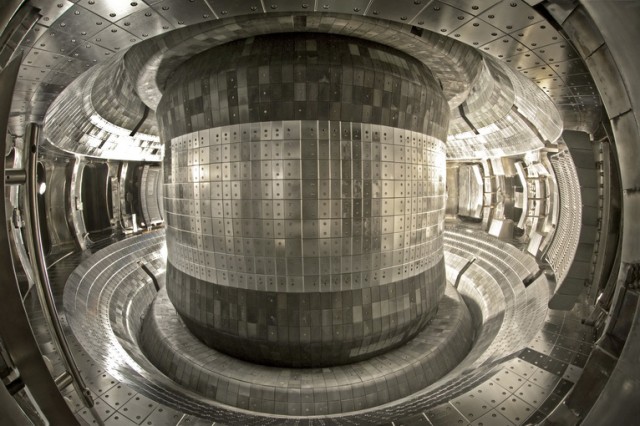Fusion reactor achieves tenfold increase in plasma confinement time
Ars Technica » Scientific Method 2013-11-18

The promise of fusion is immense. Its fuel is hydrogen plasma, made from the most abundant atom in the Universe, and the major byproduct is helium, an inert gas. In this era with the threat of climate change, clean alternative sources of energy are more necessary than ever. However, even after decades of research and enormous investments of money, scientists haven't succeeded in producing a working nuclear fusion plant. Nevertheless, many feel the potential payoff is worth continued investment.
For that reason, work is proceeding apace on the next generation of fusion reactors. Researchers at the Experimental Advanced Superconducting Tokamak (EAST) in Hefei, China, achieved a significant improvement in its confinement time and the density of the plasma it held. This step is necessary to maintain the appropriate conditions for fusion as well as to reduce the damage the hot plasma causes to the reactor walls. As described by J. Li and colleagues, the latest run at EAST achieved a plasma pulse lasting over 30 seconds, a record achievement that simultaneously demonstrated improvements in heat dispersal.
Nuclear fusion requires overcoming the electric repulsion between positively charged nuclei until the strong nuclear force exerts itself. In practice, that requires very high temperatures, which ensure that the nuclei are moving fast enough to collide rather than repel each other. While fusion is relatively easy on a small scale, researchers have yet to produce a reliable chain reaction that safely yields more energy than is required to sustain it.
Read 8 remaining paragraphs | Comments




